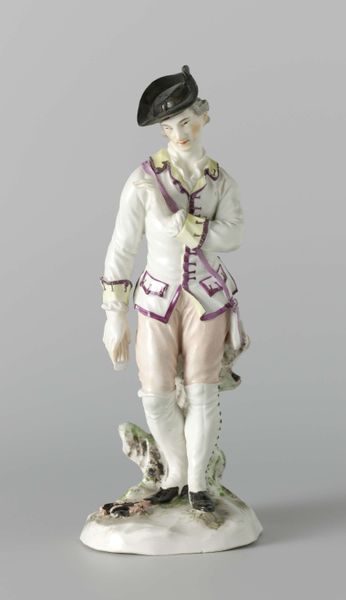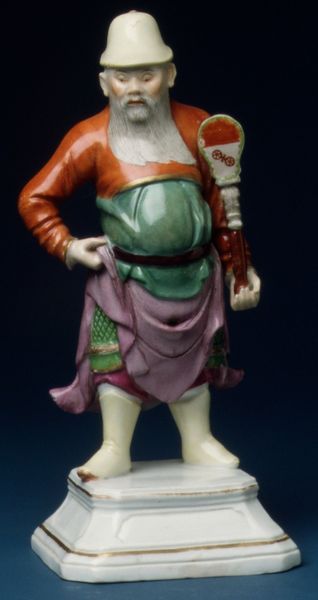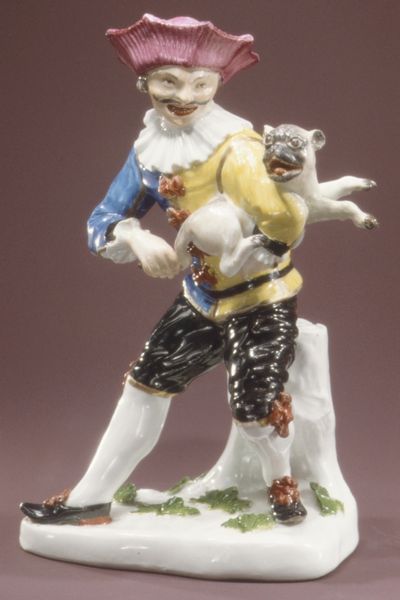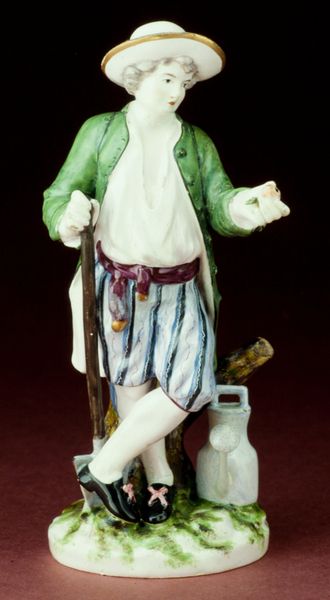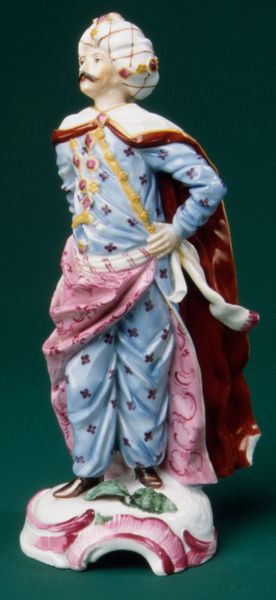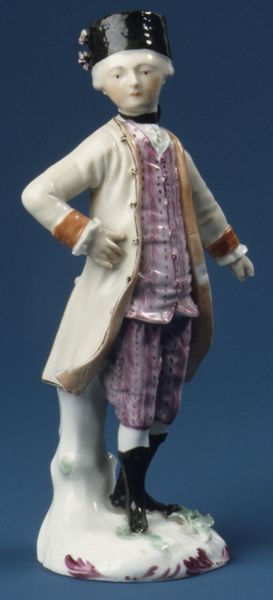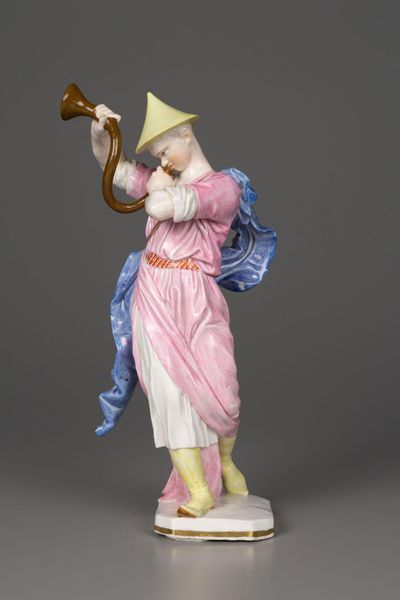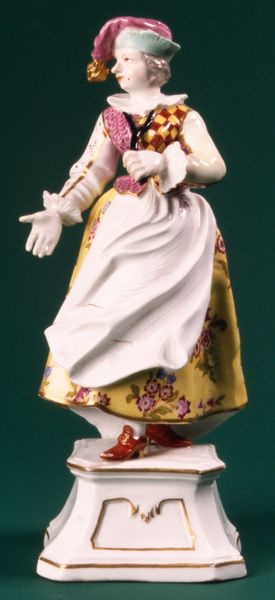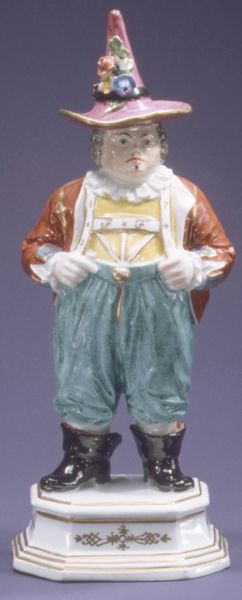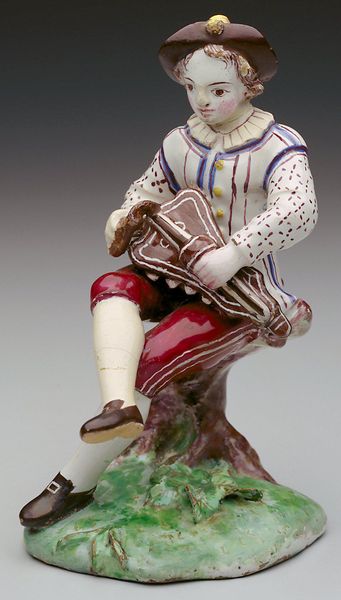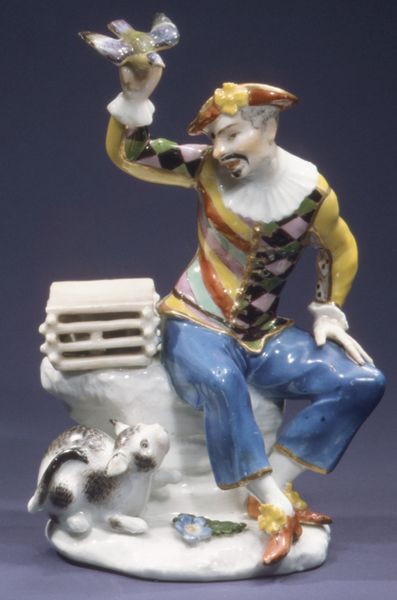
Dimensions: Height: 7 3/8 in. (18.7 cm)
Copyright: Public Domain
Curator: This delicate piece, crafted sometime between 1765 and 1780, comes from the Fulda Pottery and Porcelain Manufactory. Titled "Gardener," it's rendered in ceramic—specifically, porcelain—and can be found here at the Metropolitan Museum of Art. Editor: He looks so weary! I immediately see class divisions in play here. The somewhat comical, drooping pose hints at the realities of labor, set against a decorative, Rococo style seemingly detached from such concerns. Curator: Exactly. Porcelain production during this period demanded intense labor. The Gardener here is posed as a picturesque subject, while obscuring the intense effort required to produce both the object he holds and the figurine itself. Editor: We must consider who would've commissioned a piece like this. Clearly someone wealthy enough to not engage in such manual labor, further establishing those societal lines. Curator: Yes, porcelain at that time represented a fusion of skilled artistry, alchemic processes, and industrial systems—transforming base materials into prized possessions. This specific type of decorative art highlights its connection with the economy. Editor: Look, even his clothing—the pink coat and flowered hat—seem a performative costume of work, lacking any grit. He is not a real gardener, but an idea *of* a gardener that is safe for display in aristocratic settings. Curator: It definitely presents a sanitized version of labour. The pedestal, made of the same porcelain, places him into a permanent performance space. Every detail reflects status. Editor: I do also find his downcast expression to be a source of pity and humanity that suggests at least an ambivalence on the part of the artist. Maybe there’s room for some working-class empathy here. Curator: An interesting thought—it’s clear though, to me, that the figure stands as a physical embodiment of commodity production from the 1700s: delicate and precious on the surface but steeped in complex relations of material and making. Editor: Well, it's definitely a reminder to see past the object and ask, 'Who made this, under what conditions, and for whom?'. This transforms how we relate to its surface appeal and its beauty.
Comments
No comments
Be the first to comment and join the conversation on the ultimate creative platform.
